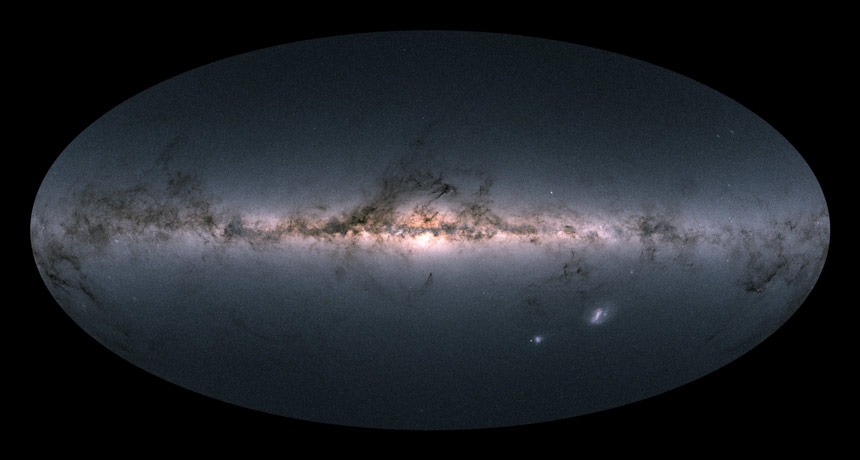The latest star map from the Gaia spacecraft plots 1.7 billion stars
Measurements also include half a million quasars and 14,099 known solar system objects

YOU ARE HERE The most precise all-sky map of the Milky Way was released by the Gaia space telescope team on April 25. It shows the total brightness and color of nearly 1.7 billion stars and a few neighboring galaxies (bright spots to the lower right of the main disk).
Gaia/DPAC/ESA







